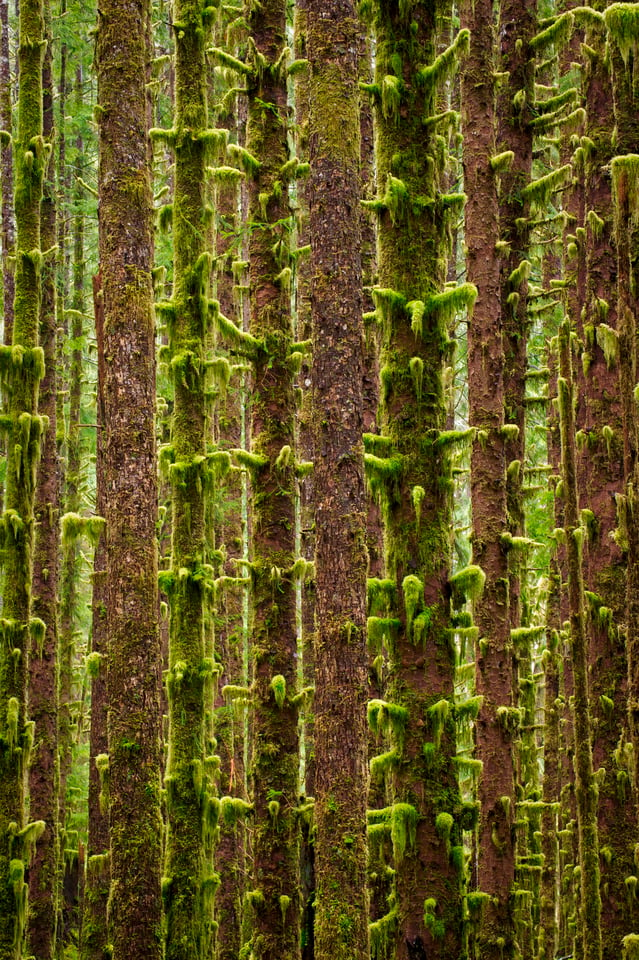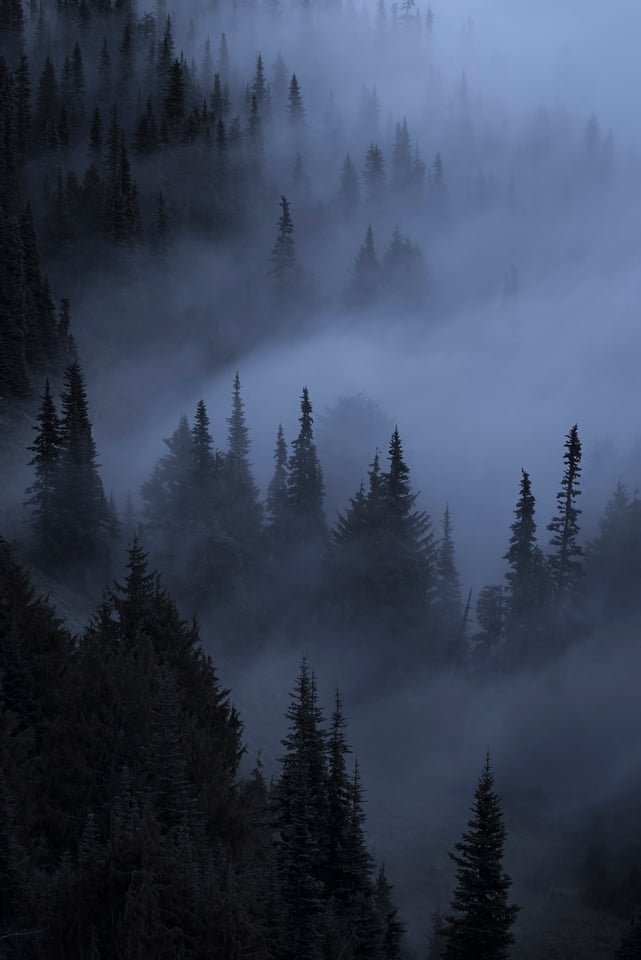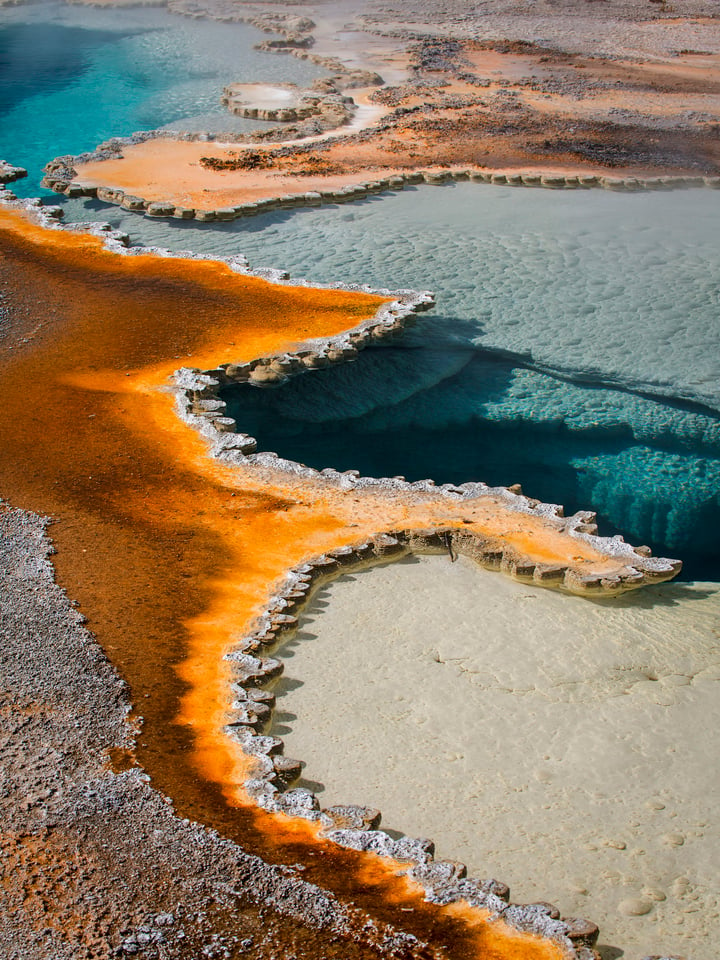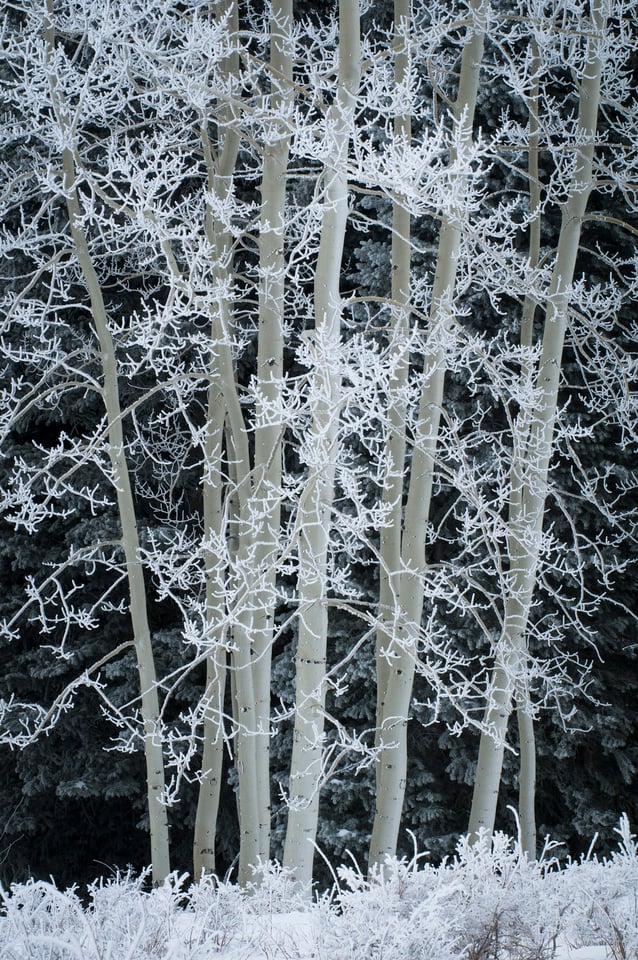When one thinks of landscape photography, one more often than not imagines dramatic, sweeping grand landscape scenes, which are almost exclusively taken with ultra wide-angle lenses. While these scenes can be quite stunning (and beautiful… and a lot of fun to shoot!), it is nice to make use of the drastically different perspective afforded by a telephoto lens. A telephoto lens, as you may know, is used to capture frame-filling images of faraway subject matter. This is because it has a much narrower angle of view than a wide-angle lens. While a wide-angle lens exaggerates differences in both the size of and the distance between near and far objects, a telephoto lens effectively reduces those differences. This means that a telephoto lens causes a close object to appear more similar in size relative to a further away object, even if the closer object would actually appear larger in person, and it means that a telephoto lens can cause the apparent distance between near and far objects to appear smaller, which creates a nice compression effect.

It is not always easy to know when to use a telephoto lens versus a wide-angle lens, nor is it always obvious how to use it. I have compiled a few ideas that I think might help somebody who wants to get the most out of their telephoto landscapes.

Table of Contents
Generate Order Out of Chaos
Scenes in the natural world can often be a tangled mess. A telephoto lens has the incredible ability to help a photographer simplify this mess – to pick through the chaos, and make order out of it. Look to find repeating or complimentary lines, patterns, shapes, layers, and textures. Even if they’re not obvious, they’re often present.


Shoot the Light
A telephoto lens is not something to use as a “backup” when conditions are less-than-ideal for wide-angle photography. It is a tool that is every bit as useful as a wide-angle lens, and it too, is best put to use in ideal lighting conditions. Due to the way telephoto lenses regulate the apparent size of near and far objects, telephoto images taken in flat light conditions, or without any direct light on the scene, can appear to be dull. Nothing helps negate this problem better than photographing scenes that feature actual light on the landscape.


Weather Matters Too
I really love using my telephoto lens in stormy or foggy conditions. If there is dramatic cloud action far away in the sky, or only in one particular section of the sky, the reach of a telephoto lens can help one capture it, and fill the frame with it. Fog works wonders for telephoto landscape images as well – few things help to simplify the chaos of a messy forest better than layers of fog or clouds.


Look Down
Maybe this one is obvious – look down! I’ve been pleased with my results when shooting intimate or abstract scenes with a normal to medium telephoto lens. I think the touch of compression these lenses offer can be helpful to these sorts of scenes, and I don’t often find myself wishing to be closer to my subjects, by way of extension tubes or a macro lens.


Beware of the Vibrations
Telephoto lenses are far more prone to camera shake than wide-angle or normal lenses. Use a sturdy tripod and ball head, cable release, and mirror lockup to combat this. I have found that in extremely windy conditions, none of this makes a difference. As we recently covered, a telephoto lens and its hood can catch the wind like a sail, causing uncontrollable camera shake and blurry images. In these circumstances, I compose an image through my viewfinder, as I normally would, but before clicking, I position my body between the wind and my equipment, effectively blocking the wind from shaking my camera and lens. Oh, and on a windy day, no matter how sturdy your setup is, do not leave your tripod standing upright with your camera gear mounted atop it. It is a bad habit that will likely only lead to monetary loss and sadness.

Using a telephoto lens can offer a nice change of pace for a contemporary landscape photographer – give it a try!
Just what is an accurate url for Alex Mody? Safari cannot find those pages.
Just what is an accurate url for Alex Mode? Safari cannot find those pages.
Thank you Alex (& Nasim), very useful (to me).
The first picture under ‘Look Down’ is surreal, looks like a whole new landscape within a small area of the ground.
My favorite tele is the 85mm/1.8 medium lens shot on film It’s “just right”.
Great article. I googled this very topic and this was the first and only article I think I need. I let my intuition do the rest. Thanks also for the tip haha “It is a bad habit that will likely only lead to monetary loss and sadness.”
I’m taking one and only one telephoto lens on a 3,000+ road trip in a few days. A Nikkor 85mm F1.8D I plan on using it a lot. Along with a Nikkor 20mm F2.8 and a Voigt 40mm F2. The pics should be interesting.
Wow! Inspirational! Motivational! Gotta go shoot!
Wow, your photographs are among my most favorite I’ve ever seen. I love the “captured” feeling of the telephoto shots, as opposed to the energetic wide-angle shots.
Beautiful photographs Alex, and good tips. Makes me want to pack a bag and leave, right now.